Changes in Herbal Medicines from Ancient Times to the Present
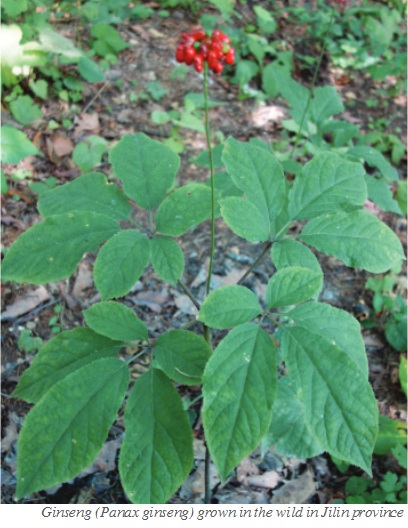 The classical literature of Chinese medicine remains highly relevant in the modern era, as many of the basic theories and herbal combinations emphasized in clinical practice were first established in texts that are nearly 2000 years old.
The classical literature of Chinese medicine remains highly relevant in the modern era, as many of the basic theories and herbal combinations emphasized in clinical practice were first established in texts that are nearly 2000 years old.
In particular, many formulas that were originally recorded by Zhang Zhong- jing in the Han Dynasty have remained popular across China, Korea, and Japan for centuries. Zhang Zhong-jing created nearly 25 percent of the formulas currently taught in basic formula classes at TCM schools, and many of the most famous herbal combinations that guide everyday clinical practice were first established in his work.
However, despite the timeless nature of these essential formulas, the world of herbal medicine continued to evolve over the centuries, and many of the substances in use today differ from the items used in ancient times. In recent years, the West has witnessed an increase in the popularity of formulas by ancient masters such as Zhang Zhong-jing, as well as an increase in publications dedicated to these classical works, such as the complete translations of the Shang Han Lun (On Cold Damage) by Wiseman, Feng, and Mitchell, and its sister text, the Jin Gui Yao Lue (Essential Prescriptions of the Golden Cabinet) by Wiseman and Wilms. However, while much attention has focused on the methods and formulas from classical texts, many practitioners still have an incomplete understanding of the ways in which the herbal medicine world has changed over the centuries.
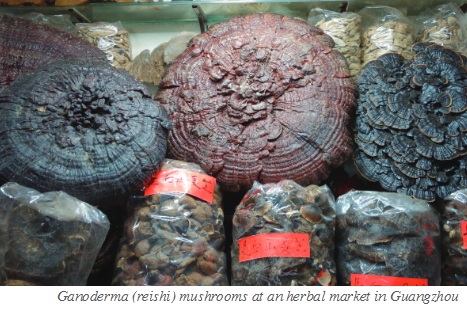 Changes in Botanical Identity
Changes in Botanical Identity
Many common herbs have been in constant use throughout the history of Chinese medicine, but often their nomenclature, processing methods, and cultivation conditions have evolved over time. As most ancient texts were written prior to the development of modern taxonomy based on Linnaean classification, there are situations where the precise botanical origin of the original plant remains unclear. Additionally, the terse linguistic style of classical Chinese is often short on detail, and many commentaries written by later generations of scholars were already separated from the original work by the passage of time.
Ancient texts such the Xin Xiu Ben Cao (Revised Materia Medica) of the Tang Dynasty featured detailed color illustrations of the plants in use, but most of the original editions that were written prior to the invention of the printing press did not survive the passage of time. After the arrival of the printing press in the Song Dynasty, written materials became more easily disseminated and prolific, yet ancient printed texts tended to feature only black and white line drawings that lack the precision necessary to verify the botanical origins of some medicinals. For example, ancient texts clearly illustrate that Ginseng (Panax ginseng) grown in the wild in Jilin province the item used as sha shen in ancient times was the herb that we now know as nan sha shen (adenophora) as opposed to bei sha shen (glehnia). Similar illustrations indicate that the geographic range of ren shen (ginseng) was likely broader in ancient times than its current range today, a factor that was likely involved in the rise of dang shen (codonopsis) as a substitute for it in the 18th century. Nonetheless, in many situations the ancient drawings provide inadequate detail for precise identification based on modern taxonomy.
In the case of herbs such as ginseng, it is clear that the plant used in ancient times is the same as the plant that is used in the modern day. In other cases, the botanical identity of a given medicinal varies in the modern day, either due to regional preferences, current or historical insufficiency of medicinal resources, or inherent ambiguities in ancient texts. For example, the species of angelica used as dang gui varies between China, Japan, and Korea in the modern day; the Chinese Pharmacopoeia lists Angelica sinensis as the official origin of dang gui while the Korean Pharmacopoeia lists Angelica gigas and the Japanese Pharmacopoeia lists Angelica acutiloba . Similarly, the use of chuan xiong varies between these three nations; China uses a long-term cultivar known as Ligusticum chuanxiong while Japan and Korea tend to use a plant from a different genus within the same family, known as Cnidium officinale.
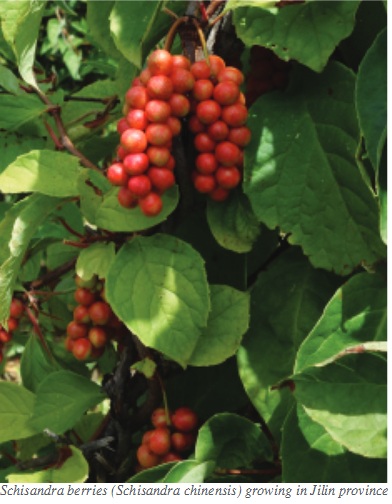 White and red peony, known in Chinese as bai shao yao and chi shao yao respectively, are another representative example of historical changes and differences in regional applications. Classical herbal texts from the Han Dynasty such as the Shang Han Lun (On Cold Damage) and the Jin Gui Yao Lue (Essential Prescriptions of the Golden Cabinet) only referred to “ shao yao,” which is a basic term for peony that does not differentiate between red peony ( chi shao ) and white peony ( bai shao ). While the terms red ( chi ) and white ( bai ) appeared in the context of shao yao for the first time in Tao Hong-jing’s annotated version of the Shen Nong Ben Cao Jing (The Divine Farmer’s Classic of Materia Medica) in the 6th century AD, bai shao and chi shao continued to be undifferentiated on a clinical level throughout the materia medica literature of the Sui (581-618) and Tang (618-907) Dynasties, and the two only really started to become separated clinically around the end of the Tang dynasty or the beginning of the Song dynasty.
White and red peony, known in Chinese as bai shao yao and chi shao yao respectively, are another representative example of historical changes and differences in regional applications. Classical herbal texts from the Han Dynasty such as the Shang Han Lun (On Cold Damage) and the Jin Gui Yao Lue (Essential Prescriptions of the Golden Cabinet) only referred to “ shao yao,” which is a basic term for peony that does not differentiate between red peony ( chi shao ) and white peony ( bai shao ). While the terms red ( chi ) and white ( bai ) appeared in the context of shao yao for the first time in Tao Hong-jing’s annotated version of the Shen Nong Ben Cao Jing (The Divine Farmer’s Classic of Materia Medica) in the 6th century AD, bai shao and chi shao continued to be undifferentiated on a clinical level throughout the materia medica literature of the Sui (581-618) and Tang (618-907) Dynasties, and the two only really started to become separated clinically around the end of the Tang dynasty or the beginning of the Song dynasty.
A clear distinction between the clinical actions of bai shao and chi shao was clearly established by the time of Cheng Wu-ji’s text Zhu Jie Shang Han Lun (Annotated Cold Damage), which was written in 1144 AD. This text stated that “ Bai [shao] supplements while chi [shao] drains; bai [shao] contracts while chi [shao] disperses.” However, by this time the medical traditions in Japan and China had already begun to diverge, and the clear distinction between the two forms is not universally accepted in Japan even in the modern era. In China, it is generally accepted that if the plant Paeonia lactiflora is cultivated and subjected to pao zhi (medicinal processing, in this case by boiling the root and removing its outer skin), it is classified as bai shao, while if the same species of plant is wild-crafted and used crude, it is used as chi shao . By contrast, the Japanese Pharmacopoeia only lists one entity ( shao yao, Paeoniae lactiflora ), and the use of two separate forms is uncommon.
The difference between bai zhu and cang zhu is another prominent example of a medicinal that has varied in identity throughout historical and regional use. In China, the plant that produces bai zhu is Atractylodes macrocephala , while the plants Atractylodes lancea and Atractylodes chinensis are used as cang zhu . While these two medicinals are closely related botanically and clinically, bai zhu is considered to be stronger for supplementing the spleen and cang zhu is considered to be stronger for drying dampness. However, ancient texts did not differentiate the two forms, referring to atractylodes simply with the single name “ zhu .” In the modern day, a fourth species, Atractylodes japonica , is used as a regional substitute for cang zhu in Northeastern China; however, A. japonica is locally cultivated and used in Japan and Korea as bai zhu .
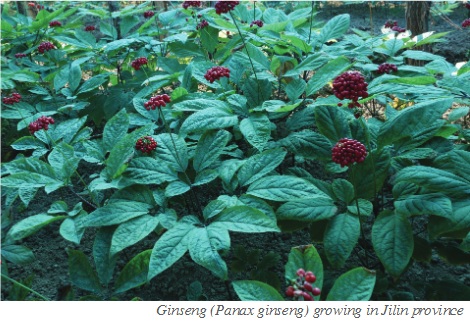 Changes Due to Limited Natural Resources
Changes Due to Limited Natural Resources
In some situations, the herbs that we use today differ from the items used in ancient times because of insufficient natural resources. For example, plants in the Akebia genus were the primary source of the medicinal mu tong in ancient times, but today the total production of the three official species of Akebia used as mu tong is insufficient to meet the entire global demand. As only Akebia species are listed in the Japanese Pharmacopoeia for use as mu tong , Japan purchases most of the global supply of the Akebia species ( Akebia quinata, A. trifoliata, and A. trifoliata var. australis ). In China and the West, the main item in use is mu tong derived from the substitute species chuan mu tong ( Clematis armandii or Clematis montana ).
Chuan mu tong is safe and is found in traditional Chinese materia medica texts dating back to the Qing Dynasty, and is now the main item in trade. However, in the 1950s a substitute plant called guan mu tong emerged in trade; guan mu tong contains the nephrotoxic substance aristolochic acid (AA) and is now banned for use worldwide. Guan mu tong was not recorded in the traditional literature yet became common in trade in the 20th century before the risks of AA were widely recognized, fortunately it is now almost never seen on the market. The safe form chuan mu tong is the item that most Western practitioners are accustomed to using, but often the name akebia remains most familiar to practitioners because it is listed in textbooks.
In another example, scarcity of the correct medicinal material also led to confusion regarding the correct plant part for use as xi xin in the 20th century. Ancient materia medica texts from the 6th century AD all the way through the Qing Dynasty clearly emphasized that the correct xi xin medicinal material is the root of the plant rather than its aerial portion, but a shortage of available medicinal resources in the in 1950s caused the entire plant to become used in medicine. After the risks of aristolochic acid became well known, research into xi xin showed that the root and rhizome is virtually free of AA while the aerial portion and leaves contain significant AA. By 2005, the Chinese Pharmacopoeia clarified that the correct plant part for xi xin should only be the root and rhizome, which is important both for its safe use as well as preservation of its traditional method of application.
In other situations, items that are now regarded as separate botanical species were lumped together in ancient texts. For example, in ancient times the medicinals wu jia pi and ci wu jia were not differentiated from one another, so precise answers about the historical background of ci wu jia are elusive. In the modern day, the supply of both of these medicinals is insufficient to meet demand, and substitutes for both varieties remain common on the market.
Similarly, the herbs chuan bei mu and zhe bei mu are now regarded as distinct entities from one another, but for much of history the division between these two items has been far more nuanced than the modern textbook distinctions that we take for granted today. By the Ming Dynasty, texts stated that bei mu from Sichuan ( chuan bei mu ) is superior, but its limited wild resources have long led to the development of cultivated varieties and products from other provinces. Today, the species cultivated in Zhejiang and used as zhe bei mu has emerged as a daodi medicinal in its own right, and wild chuan bei mu is scarcer than ever before. Interestingly, the single name bei mu is still used as the official name in the Taiwan Pharmacopoeia and the electronic medical records in Taiwan today, though the two forms remain available independently in trade. As a concentrated extract, [zhe] bei mu was the No. 1 most prescribed single herb addition to granule Yin yang huo (Epimedium wushanense) growing in Guizhou province formulas in Taiwan in 2003 (accounting for almost 17,000 kg in prescriptions in a single year based on insurance reimbursement data).
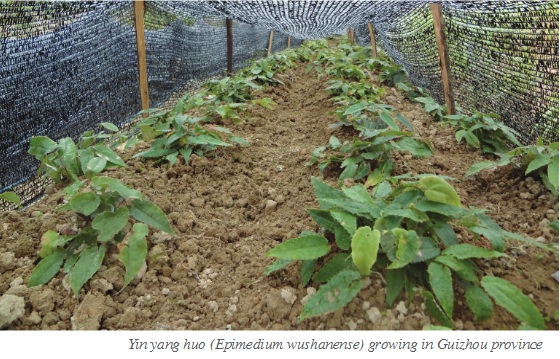 Differences in Processing Methods
Differences in Processing Methods
Beyond the issues related to botanical varieties, we also find differences in processing methods between ancient times and the present. For example, ancient texts refer to the use of pao fu zi , a specification of the lateral root of aconite that was processed with heat. In the modern day, pao fu zi is made by stir-frying fu zi in sand over high heat until it puffs up, which dramatically reduces its toxicity. Although the term pao fu zi appeared 1800 years ago in formulas by Zhang Zhong-jing, the precise method used to make it was not clearly described in ancient texts, leading modern commentators to speculate that it may have involved roasting over coals or another method that has been obscured by the passage of time.
In recent years, research has demonstrated that different processing methods for fu zi result in dramatic reductions in its toxicity. The most common form on the market, hei shun pian , has been shown to contain less than 4 percent of the highly toxic diester diterpenoid alkaloids that are found in the unprocessed root. However, while it is clear that ancient people understood the need to use heat to reduce the toxicity of aconitine alkaloids, it is difficult to quantify the effects of specific ancient methods in situations where the original texts provide insufficient detail.
The rising interest in ancient texts represents a milestone in the development of Chinese medicine in the West. As Chinese medical knowledge matures in the West, practitioners are moving beyond the basic textbook level and more translations of classical works are being produced. Nonetheless, we should remain aware of the strengths and limitations of the original Han Dynasty works, and we should strive to understand more about the ways in which herbal knowledge and use has evolved over the centuries.
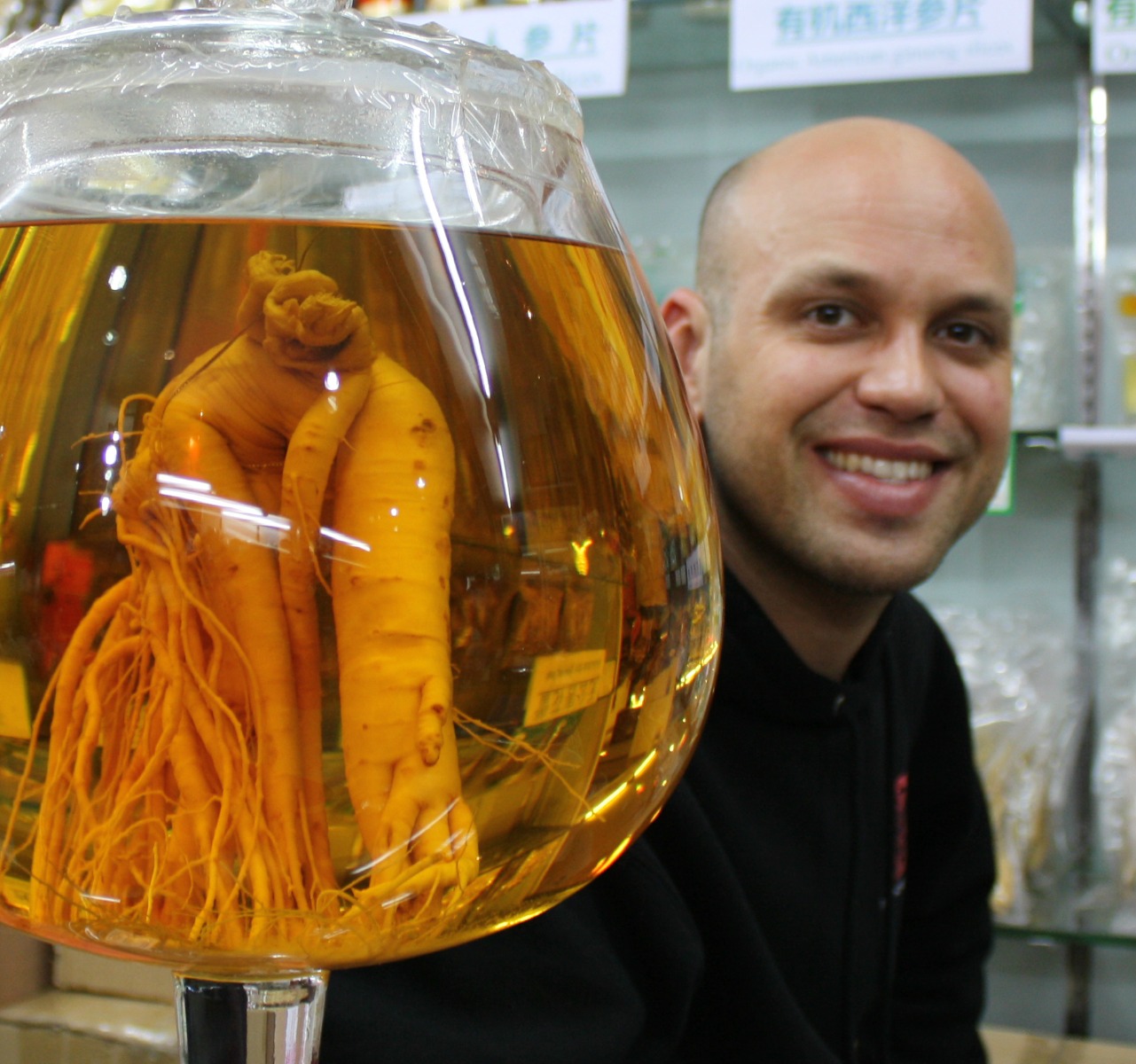 Author Bio: Eric Brand, L.Ac. is a Chinese medicine practitioner from the United States. Eric is a fluent Chinese speaker with extensive experience in mainland China, Hong Kong, and Taiwan. He is the author of A Clinician’s Guide to the Use of Granule Extracts and the co-author of the text Concise Chinese Materia Medica , and he has translated and edited a variety of modern and classical texts, including the recently acclaimed Chinese Medicinal Identification: An Illustrated Approach .
Author Bio: Eric Brand, L.Ac. is a Chinese medicine practitioner from the United States. Eric is a fluent Chinese speaker with extensive experience in mainland China, Hong Kong, and Taiwan. He is the author of A Clinician’s Guide to the Use of Granule Extracts and the co-author of the text Concise Chinese Materia Medica , and he has translated and edited a variety of modern and classical texts, including the recently acclaimed Chinese Medicinal Identification: An Illustrated Approach .
Eric has a particular passion for Chinese herbal processing, herbal authentication and quality discernment. He is currently completing his PhD in pharmacognosy at the School of Chinese Medicine at Hong Kong Baptist University. He serves as a Chinese medicine advisor to the American Herbal Pharmacopoeia and is the current Chair of the U.S. delegation for the ISO TC 249 committee on international standards in traditional Chinese medicine.
References:
- Yu Jie-chun, Xiao Pei-gen, “ Bei mu History and Development.” Journal of Chinese Medicinals (Zhong Yao Za Zhi), Issue 15, Vol. 8, August 1990: Beijing, China.
- Zhong-Zhen Zhao, Zhi-Tao Liang, Zhi-Hong Jiang, Kelvin Sze-Yin Leung, Chi-Leung Chan, Hon-Yee Chan, Jaime Sin, Tim-On Man, Kwok-Wai Law, Comparative study on the aristolochic acid I content of Herba Asari for safe use, Phytomedicine, Volume 15, Issue 9, 3 September 2008, Pages 741-748, ISSN 0944- 7113, http://dx.doi.org/10.1016/j.phymed.2008.06.006. (http://www.sciencedirect.com/ science/article/pii/S0944711308001141)
- Zhongzhen Zhao, Ping Guo, Eric Brand, The formation of daodi medicinal materials, Journal of Ethnopharmacology, Volume 140, Issue 3, 10 April 2012, Pages 476-481, ISSN 0378-8741, http://dx.doi.org/10.1016/j.jep.2012.01.048. (http://www. sciencedirect.com/science/article/pii/S037887411200061X)
- Zhang Ting-mo, Clinical Chinese Medicine, People’s Medical Publishing House: Beijing, China, 2010.
- Guanghua Lu, Zhengqi Dong, Qing Wang, Guangsheng Qian, Wenhua Huang, Zhihong Jiang, Kelvin Sze-Yin Leung, Zhongzhen Zhao, Toxicity Assessment of Nine Types of Decoction Pieces from the Daughter Root of Aconitum carmichaeli (Fuzi) Based on the Chemical Analysis of their Diester Diterpenoid Alkaloids, Planta Medica, Volume 76, Issue 8, 2010, Pages 825-830.DOI: 10.1055/s-0029-1240688. https://www.thieme-connect.de/ejournals/abstract/10.1055/s-0029-1240688

